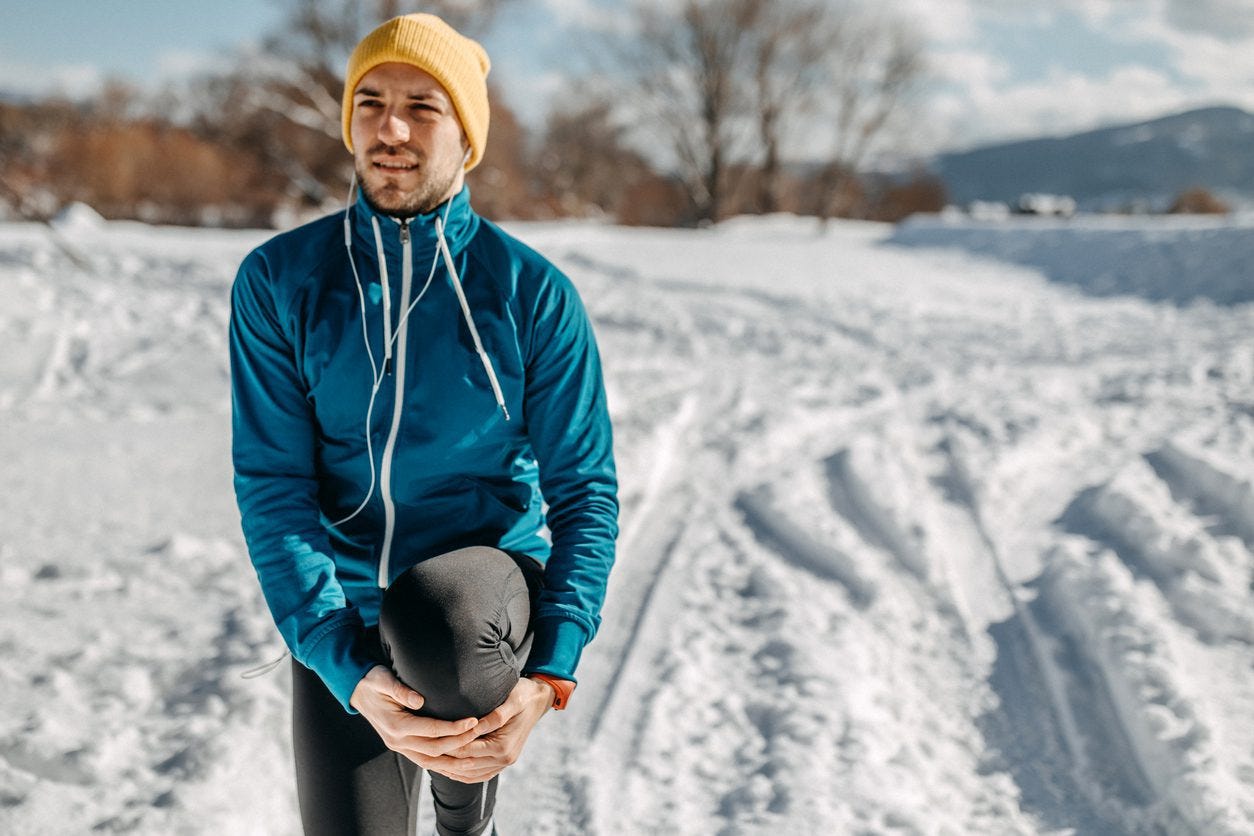6 Tips to Help You Stick to Your Workout Routine This Winter
How to Take Your Winter Workout Routine to the Next Level
For many, the winter season is associated with happy things like crisp weather, warm beverages, and dazzling light displays. But for others, the change in weather and shorter days signal a downturn in mood and energy that leaves them feeling sad, lethargic, and fatigued. Some refer to this as the “winter blues.”
Energize with Exercise
Physical exercise is perhaps the single most important thing you can do to keep your brain and body health. Exercise – particularly the aerobic kind – typically increases the brain’s dopamine levels and can boost blood flow to deliver oxygen and other positive nutrients to the brain. It also can increase the brain’s production of BDNF (brain-derived neurotrophic factor), a protein growth factor that encourages the generation of new nerve cells and is important for memory and mood.
Unfortunately, maintaining a regular workout routine can be a challenge during the winter season. Due to colder temperatures and inclement weather, the tendency for many people is to stay inside where it’s warm and hunker down for the winter.
Spending more time indoors can create physiological changes in the brain, which can have a significant impact on a person’s emotions and motivation. Also, less sunlight may cause a decrease in serotonin, which some experts believe can trigger a low mood.
For an even mood and a sense of mind-body balance, it’s important to maintain a daily workout routine. Here are indoor and outdoor exercise options to help keep you in tip-top shape this winter…
6 Tips to Help You Stick to Your Workout Routine This Winter
Outdoor Activities
1. Stay Dry
If you decide to brave the winter elements and exercise outdoors, apparel is a key consideration. Most people know they should dress to stay warm, but some fail to consider that they should also dress to stay dry. If you get wet, your body begins to lose heat. Getting wet may leave you feeling chilled and force you to cut your workout short. Of course, getting wet outside in cold weather can also put you at risk for a cold/flu, pneumonia or even hypothermia. Rather than moisture-absorbing cotton, wear synthetic fibers (polyester and polypropylene) that are better at wicking away moisture.

2. Layer Up
Anyone who’s spent the winter in a colder region knows this tip – some have learned it the hard way. But did you know that there’s a strategy in how to layer up? To stay dry and warm when venturing outside for any kind of physical activity, your first layer should be of the synthetic variety mentioned above. This should help reduce the dampness factor. Wear a middle layer (like polar fleece) if it’s really cold outside. Again, depending on the temperature, you can wear a windbreaker or a heavyweight jacket. Make sure your outerwear is waterproof.
3. Firm Footing
Always test the surface before taking off on a brisk walk or jog. Roads and sidewalks can quickly become treacherous in frigid temperatures; just because a surface looks dry doesn’t mean it is. As much as possible, try to stay on plowed or salted surfaces. Make sure you wear warm shoes with plenty of tread. Attaching spikes to your running shoes may help with maintaining footing on snow or ice, but avoid running on pavement, which can throw off your balance.
Indoor Activities
4. Local Gym
With many outdoor sports no longer a viable option due to the shorter days and bone-chilling temperatures, many heads to the gym to stay in shape. However, there are several drawbacks to purchasing a gym membership. Aside from the package price, there are gas expenses to consider and the time required to drive to and from the gym, which can be a deterrent if the weather gets nasty. Despite solid goals and good intentions, consistent gym attendance can be a challenge during the winter season.
5. Home Gym
To enjoy the benefits of the gym without having to go to the gym, many people invest in home fitness equipment. The upside is that you can use the equipment whenever you want to (and don’t have to worry about wiping down an apparatus before using it). The downside is that starting a home gym can be expensive. Plus, if anything breaks, it’s up to you to replace it. If you decide to invest in home gym equipment, you can start small with dumbbells and work your way up to a stair climber, stationary bike, bench press, or treadmill.
6. Free Gym
Why invest in home gym equipment when there are plenty of exercises you can do for free? You can do basic exercises – like push-ups, sit-ups (crunches), lunges, or leg lifts – from the comfort of your own home. Also, there’s a whole regimen of exercises you can do with a sturdy chair. All of that’s great for strength training, but what about cardio? There are plenty of standbys like skipping rope or doing jumping jacks. You can also do high knees, side to side punches or sumo squat jumps. Or there’s the ever-dependable running in place.
Adopting these brain-healthy habits can help you stay in shape and improve your mental and emotional well-being during the holiday season.
At BrainMD, we’re dedicated to providing the highest purity nutrients to support your brain health and overall well-being. For more information about our full list of supplements, please visit us at BrainMD.
- This Is What You Need to Know About HBOT
Medically Reviewed by Dr. Nicole Avena - April 22, 2024 - Hormone Changes in Men: How to Know If You Have Low Testosterone! - April 15, 2024
- This Is What You Need to Know About EMDR Therapy! - April 11, 2024



